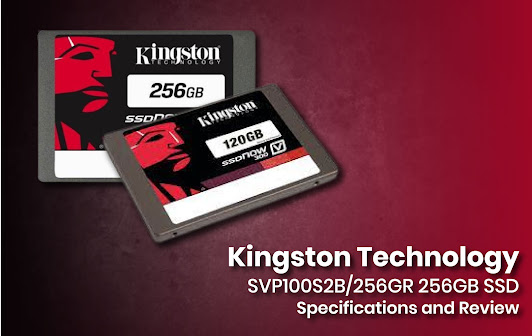SVP100S2B/256GR SSD-Overview, Features, Specs, Benefits!
SVP100S2B/256GR SSD-Overview, Features, Specs, Benefits!
A solid-state drive, commonly known as SSD, is a storage media that employs non-volatile memory to store and retrieve data. An SSD, unlike a hard drive, has no moving components, offering incentives such as quicker data transmission, noiseless operation, improved durability, and consumes less power.
SSDs have progressed into viable substitutes for traditional hard drives in both pcs and laptops. SSDs are also an excellent choice for Ultrabook, nettops, and other workloads that do not require much storage.
SATA connections are generally used for SSDs, with a possible limit transmission rate of 750 Mbps. SSDs in later versions link to the motherboard's PCIe connector and can reach speeds of up to 1.5 Gbps. The PCIe M.2 connectivity standard, released in 2014, has a maximum genuine throughput of about 4 GB/s.
Overview:
SVP100S2B/256GR SSDs are designed for high-end professional situations, as well as system builders and programmers. It has a conventional SATA interface. However, unlike a traditional hard drive, it has no moving parts. It delivers the endurance and dependability required by experts in the office or on the highway. Frequent flyers in any field, doctors, software engineers, content creators, illustrators, IT employees, and federal agents, would enjoy its higher accuracy.
Feature:
Intelligent — MLC NAND flash memory components are used.
Quiet – operates quietly and smoothly, with no moving mechanical components.
Shock-resistant – because there are no moving mechanical parts
Shock-resistant – because there are no moving mechanical parts
Specific and measurable functions are supported.
Specs:
Product Code: SVP100S2B/256GRspacer
Form factor: 2.5"
Interface: SATA 1.5Gb/s and 3.0Gb/s
Capacities: 256 GB
Dimensions: 69.85 x 100 x 9.5 mm
Weight: 128 - 151 grams
Storage temp: -40 ~ 84°C
Operating temp: 0 ~ 71°C
Vibrations operating: 2.7Gs
Vibrations non-operating: 20Gs
Sequential Read Throughput: 230 MB/s
Sequential Write Throughput: 180 MB/s
HDD Suite Score 256 GB: 34, 795
Power specs:
Active - 3.4W (TYP)
Power specs: Idle - 0.05W
MTBF: 1, 000, 000 Hrs
Benefits:
The following are the benefits of using a solid-state drive SSD:
Resilience and endurance
SSDs are more robust and long-lasting. For example, if a person dropped their laptop on the floor and included an SSD, the screen would most likely break before the SSD. That is what we mean when we talk about SSD endurance and resilience.
Performance
SSDs have access speeds ranging from 35 to 100 microseconds, delivering 100 times the performance of Hard disks. This leads to quick efficiency, which correlates to speedier boot times, faster program response time, and improved system responsiveness.
Simpler to travel
Solid-state drives are more mobile-friendly and better adapted for work travel since they feature lightweight hardware or moving elements.
Dependability and efficiency
The SSD stores data in flash memory, which is more reliable and efficient than hard disc drives. Moreover, because SSDs lack moving parts, they need less power to operate. Users can benefit from increased battery life for their computers.
Simple to set up
Installing SSDs is simple and requires no prior experience. Maybe just a screwdriver.
Conclusion:
Since SSDs are not constrained in any way, their size can keep getting smaller over time. SSDs have been marketed in 2.5-inch laptop-drive capacities. However, this is solely for ease of use in existing drive bays.


Comments
Post a Comment